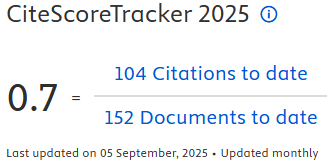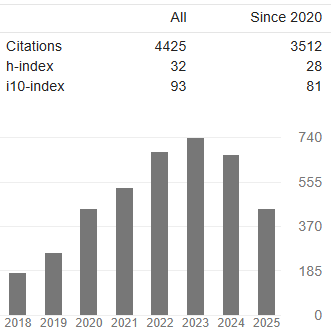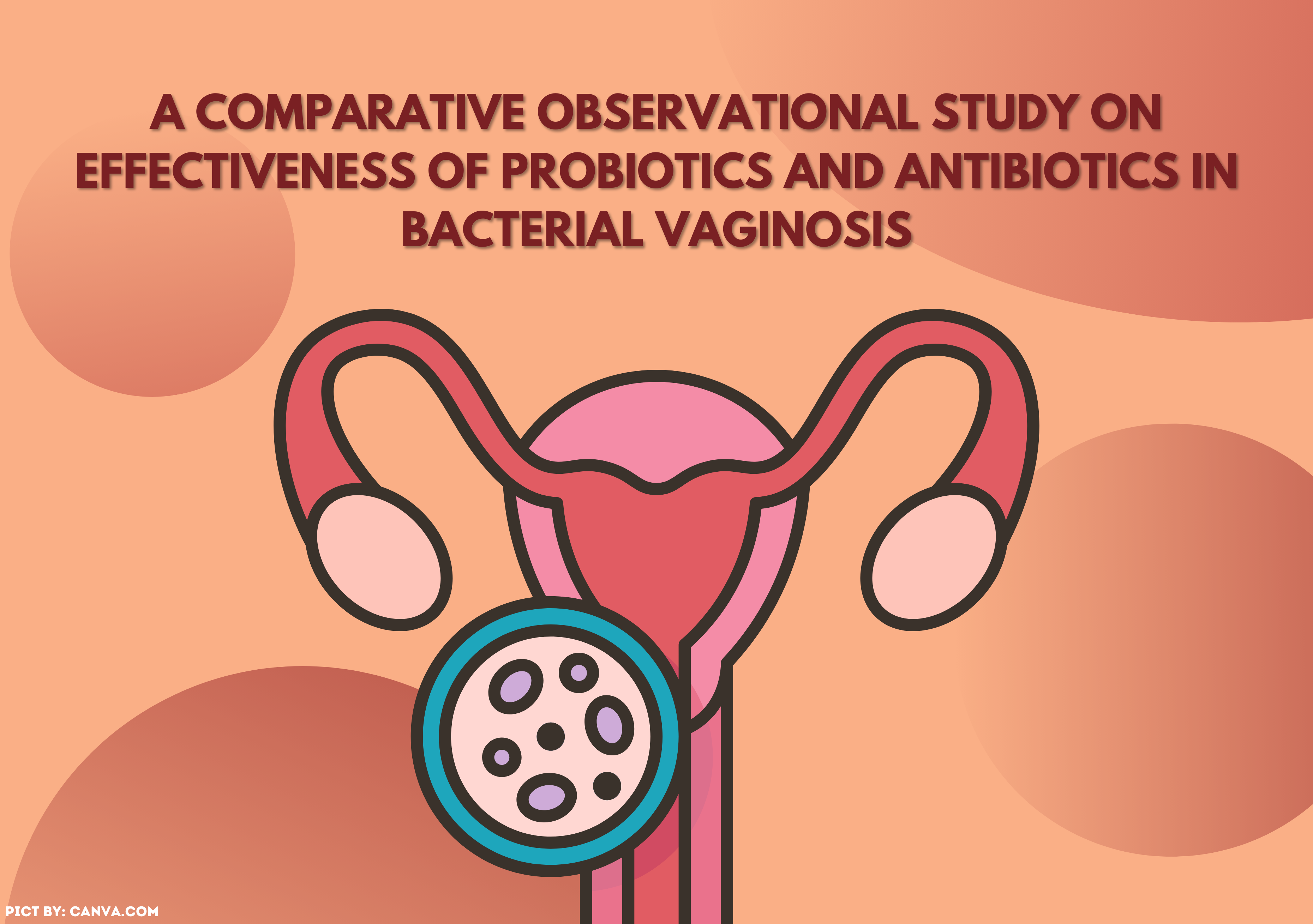ANALYSIS OF MOTIVATION PHASE OF THE HAPA THEORY (HEALTH ACTION PROCESS APPROACH) AND INTENTION TO EXCLUSIVE BREASTFEEDING IN THE SIDOSERMO PRIMARY HEALTHCARE CENTER, SURABAYA
Downloads
ABSTRACT
Exclusive breastfeeding can encourage optimal growth and development, especially during the child's critical period which spans from when the baby is born until 2 years old. The objective of this study was to analyze the motivational phase of the Health Action Process Approach (HAPA) theory with the intention of exclusive breastfeeding in the work area of the Sidosermo Primary Healthcare Center. This study was a quantitative cross-sectional study with an observational research design. The sampling technique was conducted through the systematic random sampling technique with a total sample of 32 people. The study showed that risk perception has a significant influence on the intention of exclusive breastfeeding with a significance value of 0.014 < α (0.05) and an odds ratio of 0.101. This suggests that respondents who had the right perception about exclusive breastfeeding are 0.101 times more likely to exclusively breasfeed their child than respondents who had a wrong perception. This study also showed that there was a significant influence between self-efficacy towards the intention of exclusive breastfeeding, with a significance value of 0.006 < α (0.05). Respondents who felt that they were able to give exclusive breastfeeding were 17 times more likely to provide exclusive breastfeed than those who felt they were less able. The results of this study indicated that there was an influence between the outcome expectancies with the intention of exclusive breastfeeding with a significance value of 0.004 < α (0.05) and an odds ratio of 28.8. It means that respondents who had high expectations had 28.8 times more intention to provide exclusive breastfeeding than respondents who had low expectations.
Keywords: exclusive breastfeeding, intention, Health Action Process Approach (HAPA)
Armini, N. W., Somoyani, N. K., & Budiani, N. N. (2010). Perbedaan Motivasi Intrinsik Dan Motivasi Ekstrinsik Dalam Pemberian Air Susu Ibu (Asi) Oleh Ibu Menyusui Eksklusif Dengan Ibu Menyusui Tidak Eksklusif, 8–14.
Badriyah, N. L. (2017). Analisis Fase Motivasi Teori Hapa (Health Action Process Approach) Pada Siswi Sekolah Dasar Negeri Kamoning Dalam Menjaga Kebersihan Diri Saat Menstruasi.
Dong, A. S. I. E., & Lim, R. (n.d.). "ASI Ekslusif Dong!”
Fahriani, R., Rohsiswatmo, R., & Hendarto, A. (2014). Faktor yang Memengaruhi Pemberian ASI Eksklusif pada Bayi Cukup Bulan yang Dilakukan Inisiasi Menyusu Dini (IMD), 15(6).
Fitriani, T. (2018). Eksklusif Di Desa Bumirejo Kulon Progo Tahun 2018Eksklusif Di Desa Bumirejo Kulon Progo Tahun 2018.
Gewa, C. A., & Chepkemboi, J. (2016). Maternal knowledge, outcome expectancies and normative beliefs as determinants of cessation of exclusive breastfeeding : a cross-sectional study in rural Kenya. BMC Public Health, 1–9. https://doi.org/10.1186/s12889-016-2907-2
Natanael, H. (2013). Pengaruh Susu Formula Terhadap Timbulnya Gejala Alergi, 0–6.
Novita, M., & Simatupang, N. D. (2015). Hubungan Antara Pemberian Asi Eksklusif Dengan Kemampuan Motorik Kasar Bayi 6-24 Bulan, 113–114.
Nur, A., Marissa, N., Penelitian, L., & Aceh, B. (2013). Riwayat Pemberian Air Susu Ibu dengan Penyakit Infeksi pada Balita Breastfeeding History with Infectious Disease in Toddlers, (9).
Ogden, J. (n.d.). Health Psychology.
Puspitasari, Y. (2015). Perbedaan Persepsi Kontrol Diri Ibu Hamil Terhadap Intensi Ibu Untuk Memberikan ASI Eksklusif Pada Kelas Ibu Hamil Plus di Puskesmas Muara Teweh Kabupaten Barito Utara, 5(2).
Rahmawati, M. D. (2011). Faktor-Faktor yang Mempengaruhi Pemberian ASI, 1(1).
Safitri, I. (2016). Faktor-Faktor Yang Mempengaruhi Kelancaran Produksi Asi Pada Ibu Menyusui Di Desa Bendan,Kecamatan Banyudono, Kabupaten Boyolali.
Sari, D. (2019). Faktor Yang Mempengaruhi Breasfeeding Self Efficacy (BSE) Dalam Pemberian ASI Eksklusif Pada Ibu Hamil Trimester 3, 3(1), 22–27.
Sugiyono. (2007). Metode Penelitian Kuantitatif, 25–33.
Susanti, I., Sitohang, N., & Siregar, F. (2015). Jurnal Kebidanan dan Keperawatan, 11(1).
WHO. (2002). Infant and young child nutrition Global strategy on infant and young child feeding, 53(February).
- The authors agree to transfer the transfer copyright of the article to The Indonesian Journal of Public Health effective if and when the paper is accepted for publication.
- Authors and other parties are bound to the Creative Commons Attribution-NonCommercial-ShareAlike 4.0 International License for the published articles, legal formal aspect of journal publication accessibility refers to Creative Commons Attribution-NonCommercial-ShareAlike 4.0 International License (CC BY-NC-SA), implies that:
- Attribution ” You must give appropriate credit, provide a link to the license, and indicate if changes were made. You may do so in any reasonable manner, but not in any way that suggests the licensor endorses you or your use.
- NonCommercial ” You may not use the material for commercial purposes.
- ShareAlike ” If you remix, transform, or build upon the material, you must distribute your contributions under the same license as the original.































